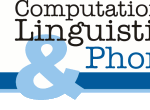

|
Home
Description Program Submission Invited Speakers Organizers |
WhenICU - Workshop Description
Gaze behavior provides fundamental mechanisms for sharing mental states such as goals and desires and helps to ground communicative content. In order to establish common ground in verbal and non-verbal interactions, interlocutors often need to acquire knowledge about their interaction partner's focus of visual attention by following their gaze and, in turn, have to direct their partner's attention to their own target object or location. Responding to or leading someone's gaze to a location or an object of interest results in a situation of joint attention -- a referential triad between two individuals and some entity in the environment. As people often look at what they attend to and where they intend to act, joint attention is considered fundamental to an understanding of other minds and the interaction with other individuals.
Joint attention plays an important role in numerous social-cognitive processes, including Theory-of-Mind (Tomasello, 1995), perspective taking (Moll & Meltzoff, 2011), and processes relating to learning and memory from early infancy throughout adulthood (Kim & Mundy, 2012). However, despite extensive research in virtually all areas of cognitive science aiming at an understanding of behavioral functions, cognitive processes, and neural mechanisms of joint attention, there is a plethora of unresolved questions. The interplay of the development of joint attention and language during infancy (Baldwin, 1995) or the relation between joint attention and the perception of other persons (Frischen, Bayliss, & Tipper, 2007) are among those. Finally, the neural circuits subserving our ability to engage in joint attention have been investigated only recently because appropriate methods to study gaze-based face-to-face interaction in real-time have only recently been made available (Redcay et al., 2010; Schilbach et al., 2010).
In addition to its role in social cognition, seeing and following or directing someone else's gaze is crucial for effective language learning (Morales et al., 2000) and language pro- cessing in adults (Clark & Krych, 2004; Hanna & Brennan, 2007; Staudte & Crocker, 2011). Monitoring each other's gaze behavior supports the understanding of what the interlocutor is saying or understanding (Richardson & Dale, 2005; Hanna & Brennan, 2007) and fosters the synchronization of interlocutors in discourse (Garrod & Pickering, 2004). Thus, initiating or establishing joint attention at a chosen point during dialog can be a powerful means to augment and modulate linguistic content.
Finally, severe impairments in multiple aspects of social cognition and communication are among the core symptoms of autism spectrum disorders (ASD). Due to the broad impact of joint attention on social and communicative skills, its study has become a major focus in the empirical research on ASD. The majority of this research is dedicated to understanding the implications of mutual and triadic gaze for the development of skills related to communication among typically developing individuals and those with ASD (Mundy, Gwaltney, & Henderson, 2010; Redcay et al., 2012).
Overall, this workshop aims to explore how traditionally separate research areas such as social cognition/neuroscience, psycholinguistics, human-computer interaction and developmental psychology contribute to an understanding of the general phenomenon of gaze-following and joint attention from all these different perspectives -- and how these fields can benefit and learn from each other, e.g. by comparing different approaches and methodologies.